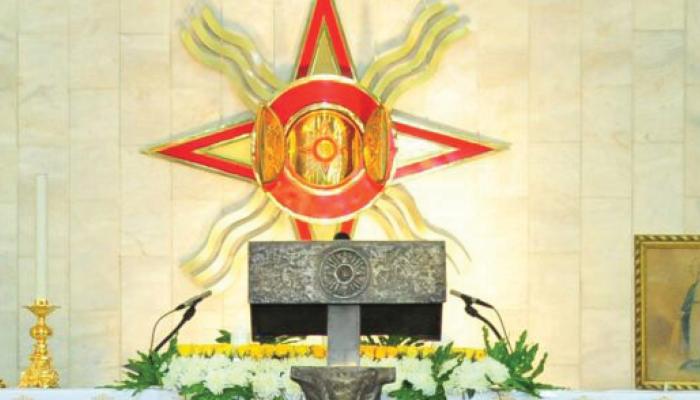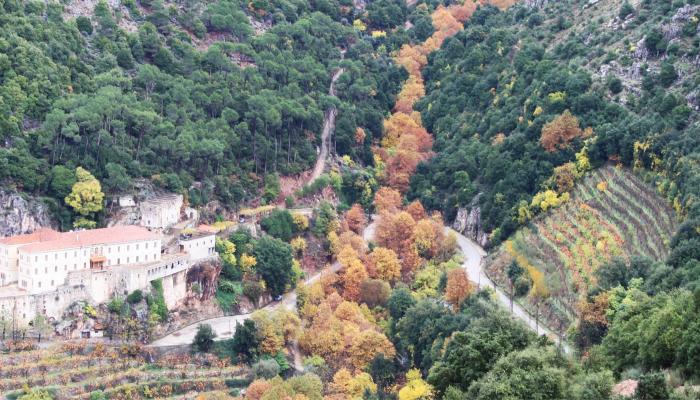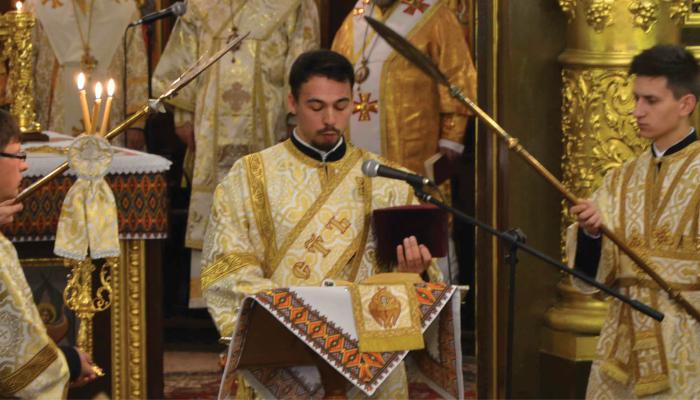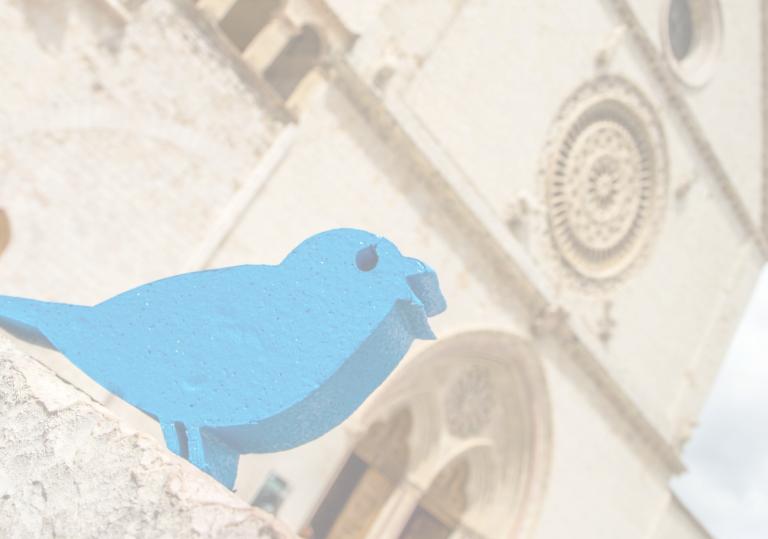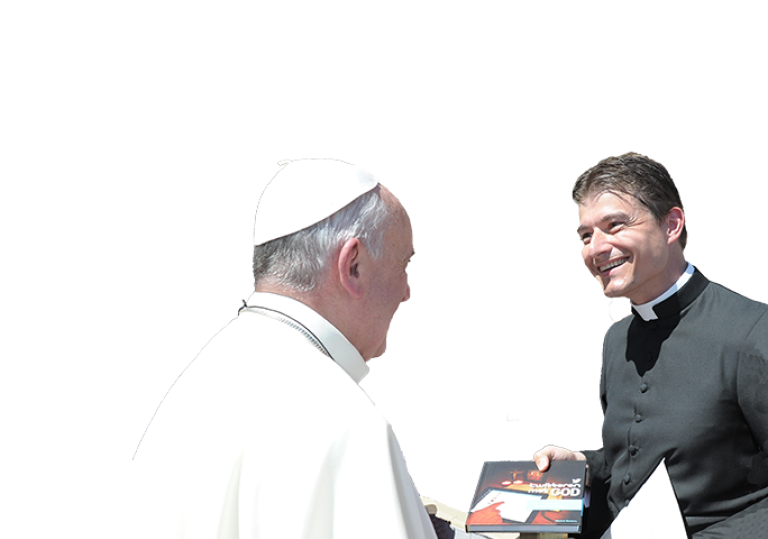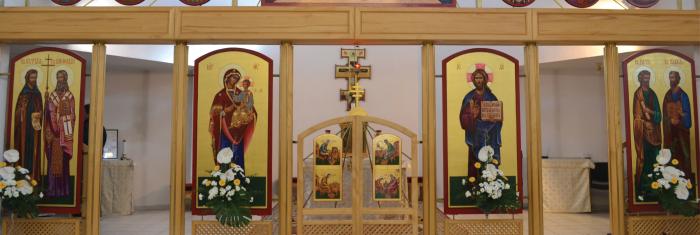
3.52 Cili është ndryshimi midis Katolikëve latinë dhe bizantinë?
Katolikët latinë dhe bizantinë kanë saktësisht të njëjtin besim. Dallimet janë kryesisht në arkitekturën e kishës, zakonet e përditshme të krishtera dhe mënyrën e kremtimit të fesë dhe sakramenteve. Për shembull, Pagëzimi, Eukaristia dhe Krezmimi merren të gjitha në të njëjtën ditë të fillimit në besim. Një ndryshim tjetër është se priftërinjtë e ritit lindor mund të martohen.
Shumë prej formave dhe zakoneve në ritin bizantin korrespondojnë me traditën Ortodokse Lindore. Megjithatë, në kundërshtim me Ortodoksët, Katolikët Grekë janë krejtësisht pjesë e Kishës Katolike. Viti liturgjik mund të jetë i ndryshëm, aty ku Kishat Lindore vazhdojnë të përdorin kalendarin Julian (25 para Krishtit), ndërsa Kisha Perëndimore ka përqafuar kalendarin Gregorian më të zakonshëm (1582 Pas Krishtit).
Si e kremton liturgjinë Kisha në tokë?
Kisha në tokë e kremton liturgjinë si popull priftëror, ku secili vepron në bazë të funksionit të vet, në njësi me Shpirtin Shenjt: të pagëzuarit dhurohen si fli shpirtërore; mbarështuesit e shuguruar kremtojnë sipas Urdhrit të marrë për shërbimin e të gjithë anëtarëve të Kishës; Ipeshkvijtë dhe meshtarët veprojnë në personin e Krishtit Krye. [KKKP 235]
Si kremtohet liturgjia?
Kremtimi liturgjik është i ndërthurur me shenja dhe simbole, domethënia e të cilave, e rrënjosur në krijim dhe në kulturat njerëzore, saktësohet në ngjarjet e Besëlidhjes së Vjetër dhe zbulohet plotësisht në Personin dhe në veprën e Krishtit. [KKKP 236]
Cili është qëllimi i figurave të shenjta?
Figura e Krishtit është ikona liturgjike më e shkëlqyeshme. Të tjerat, që paraqesin Zojën e Bekuar dhe Shenjtërit, shprehin Krishtin, që në ta është lavdëruar. Ato kumtojnë të njëjtin mesazh ungjillor që Shkrimi i Shenjtë përçon nëpërmjet fjalës dhe ndihmojnë zgjimin dhe ushqyerjen e besimit të besimtarëve. [KKKP 240]
Cili është funksioni i vitit liturgjik?
Në vitin liturgjik Kisha kremton krejt Misterin e Krishtit, që nga Mishërimi deri në kthimin e Tij të lavdishëm. Në ditët e caktuara, Kisha nderon me dashuri të veçantë të lumen Mari, Nënën e Hyjit, dhe përkujton edhe Shenjtërit, që për Krishtin kanë jetuar, me Të kanë vuajtur dhe me Të janë lavdëruar. [KKKP 242]
What is the most profound origin of the liturgy?
The most profound origin of the liturgy is God, in whom there is an eternal, heavenly banquet of love – the joy of the Father, the Son, and the Holy Spirit. Because God is love, he would like to let us participate in the feast of his joy and to grant us his blessings.
Our earthly liturgies must be celebrations full of beauty and power: Feasts of the Father who created us – that is why the gifts of the earth play such a great part: the bread, the wine, oil and light, incense, sacred music, and splendid colors. Feast of the Son who redeemed us – that is why we rejoice in our liberation, breathe deeply in listening to the Word, and are strengthened in eating the Eucharistic Gifts. Feasts of the Holy Spirit who lives in us – that is why there is a wealth of consolation, knowledge, courage, strength, and blessing that flows from these sacred assemblies. [Youcat 170]
What is the essence of every liturgy?
Liturgy is always in the first place communion or fellowship with Jesus Christ. Every liturgy, not just the celebration of the Eucharist, is an Easter in miniature. Jesus reveals his passage form death to life and celebrates it with us.
The most important Liturgy in the world was the Paschal liturgy that Jesus celebrated with his disciples in the Upper Room on the night before his death. The disciples thought that Jesus would be commemorating the liberation of Israel from Egypt. Instead, Jesus celebrated the liberation of all mankind from the power of death. Back in Egypt it was the “blood of the lamb” that preserved the Israelites form the angel of death. Now he himself would be the Lamb whose blood saves mankind from death. For Jesus’ death and Resurrection is the proof that someone can die and nevertheless gain life. This is the genuine substance of every Christian liturgy. Jesus himself compared his death and Resurrection with Israel’s liberation from slavery in Egypt. Therefore, the redemptive effect of Jesus’ death and Resurrection is called the Paschal mystery. There is an analogy between the life-saving blood of the lamb at the Exodus of the Israelites from Egypt (Ex 12) and Jesus, the true Paschal Lamb that has redeemed mankind from the bondage of death and sin. [Youcat 171]

